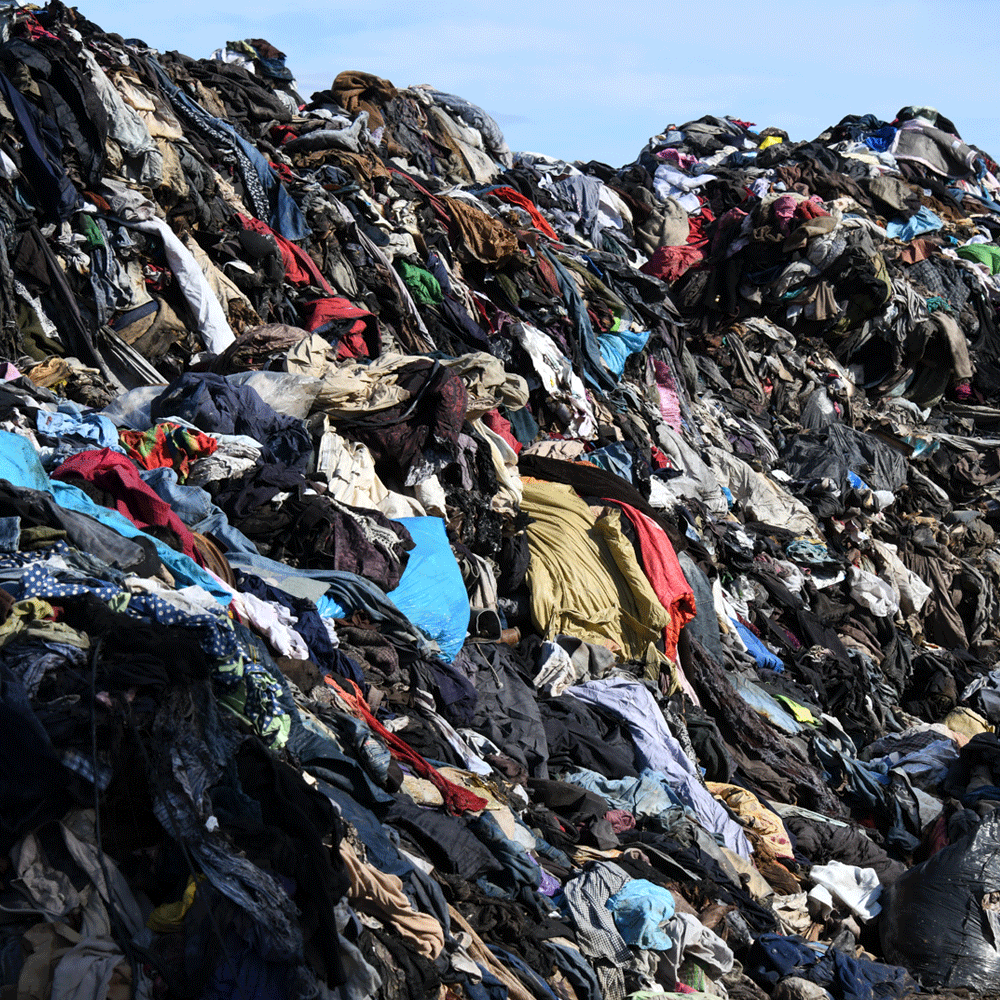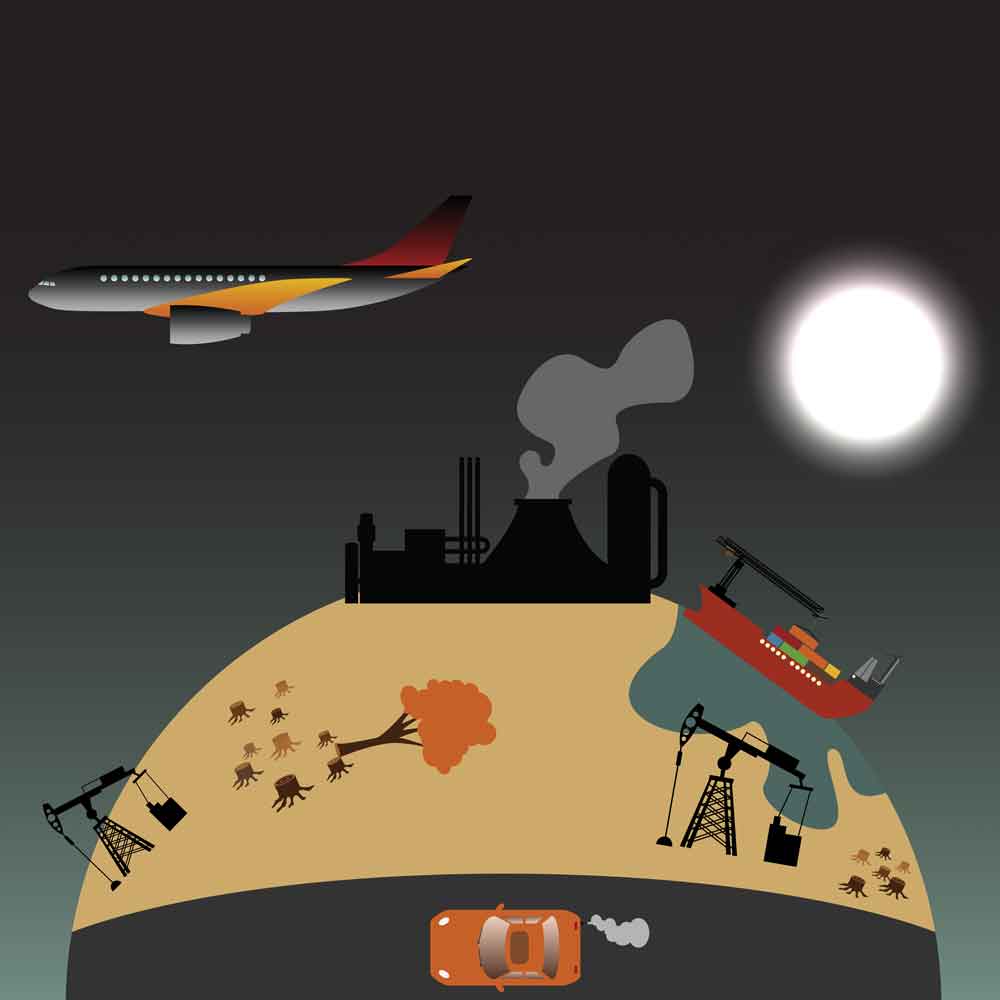Environmental Footprint
#theresnoplanetb
The fashion industry produces 10% of all humanity's carbon emissions and is the second-largest consumer of the world's water supply. Not only this, it is responsible for polluting the oceans with micro plastics and toxic dyeing chemicals.[1]
Each stage of the lifecycle of a garment has some form of impact on the environment. From where they begin as raw materials, to the process of becoming an outfit (including how they are transported worldwide) to their final resting place on a landfill site after only a few wears.

Water Pollution
Considering that most garments are made in developing countries where people have limited or no access to clean drinking water, the toxic substances that are dumped by textiles factories directly into rivers couldn't be making the situation for these people any worse.
Wastewater contains toxic substances such as lead, mercury, and arsenic, among others. These are extremely harmful for the aquatic life and the health of the millions people living by those rivers banks. The contamination also reaches the sea and eventually spreads around the globe.
Another major source of water contamination is the use of fertilizers for cotton production, which heavily pollutes runoff waters and evaporation waters.[2]
ECOLOOKBOOK seeks to choose fashion brands that produce their clothes with strict environmental regulations and are choosing sustainable fibres over those produced with harsh chemicals.

Water Consumption
Soaking up, 33 million Olympic sized swimming pools of the world's water, the fashion industry is a major water consumer. [2]
The problem? Water is a critical part of all manufacturing processes and is unavoidable but could be limited by using recycled water and choosing more modern techniques involving less chemicals.
Challenges lie with creating fabrics from the crop stage where fields need to be watered to washing and dyeing stages. Not forgetting, all the fabrics that come from animals (wool and leather) which need to be treated with strong chemicals in order to make them clean and ready for the factories.
ECOLOOKBOOK supports non thirsty brands who are coming up with innovative ways to tackle this issue.

Fashion Waste
Imagine packing up a suitcase with all of your unwanted clothes and throwing it away each year. Where does it go? With only a small percentage of clothing being recycled or donated and the rest ending up on landfills we are battling with so many non-biodegradeable fibres that are taking up to 100 of years to decompose.
The worst offenders being synthetic fibres which are used in 72% of our clothing, to leather taking between 25 and 50 years and finally, cotton taking between 1 to 5 months.
ECOLOOKBOOK promotes labels following a low or zero waste philosophy. [3]

CO2 Emissions
True or false? The fashion industry's carbon impact is bigger than the airline industries.
True. Here are some facts...
At every stage of a garment's lifecycle, CO2 emissions are unavoidable due to transportation, production and dyeing processes to even the shopping habits that we do not think about (driving cars to our favourite shops.) The apparel industry accounts for 10% of global carbon emissions.
Compared to natural fibres, synthetic fibres (polyester, acrylic, nylon, etc.) are made from fossil fuels which make the production process more energy-intensive and releases more CO2 emissions.
Many developing countries are still powering their factories with coal which have the highest and dirtiest emissions compared to other energy resources.
ECOLOOKBOOK supports fashion labels constantly improving their carbon footprint by choosing locally sourced resources that are also produced in situ and do not need to be transported.[4]
Sources
[1] https://www.bbc.com/future/article/20200310-sustainable-fashion-how-to-buy-clothes-good-for-the-climate
[2] waterisaright.com
[3] https://www.worldbank.org/en/news/feature/2019/09/23/costo-moda-medio-ambiente
[4] https://goodonyou.eco/international-shipping/
